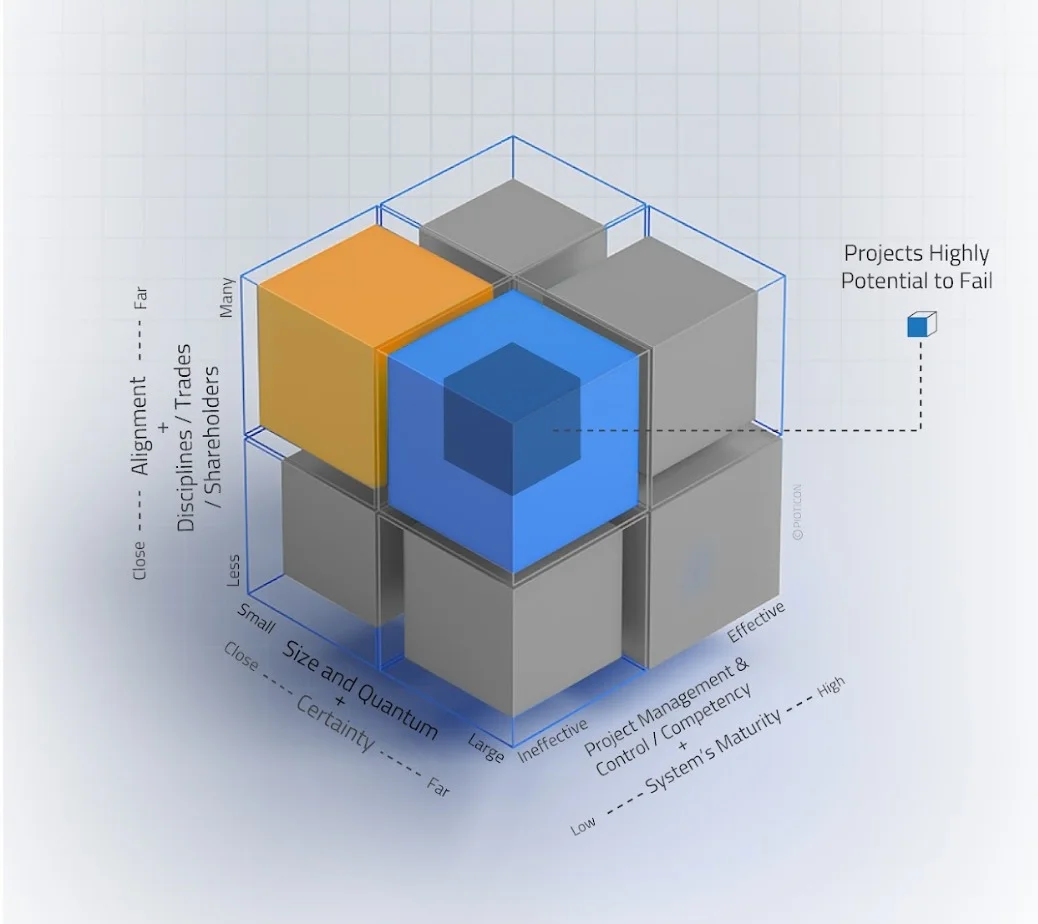- 21 March 2025
- Madan G Anand
- 0
Seeing the Bigger Picture: How Perspective Shapes Project Success
When infrastructure projects make headlines, it’s often for the wrong reasons—budget overruns, missed deadlines, and large-scale inefficiencies. The narrative seems straightforward: yet another failed project, another financial disaster.
But is it really that simple?
Before labeling a project as a failure, we need to step back and ask deeper questions:
- What does the term project actually mean to different stakeholders?
- Who defines success, and on what basis?
- Why do certain projects face more obstacles than others?
The answers lie in perspective, how different players within a project ecosystem define objectives, risks, and responsibilities. When these perspectives don’t align, the consequences ripple through the entire lifecycle of a project.
One Project, Many Perspectives
Let’s take a simple example of a 20km motorway project. While it might appear to be a well-defined endeavor, its meaning varies drastically depending on who you ask:
- For the client, it’s just one piece of a larger 100km transportation program, where realistic expectations and clear scope drive its success.
- For the principal contractor, it’s a contractual commitment that must be meticulously managed to avoid scope creep and unforeseen liabilities.
- For the designer, success means finding a solution in the most economical way, efficiency, and compliance in both temporary and permanent design works.
- For the subcontractor, the goal is to execute their specialized task as cost-effectively and efficiently as possible.
- For politicians and governments, it is driven by public perception, funding, and election cycles, the project’s success is tied to policy objectives, economic impact, and public reception.
Each of these players is operating within the same project, yet their definitions of success—and their risks—are vastly different.
When Perspectives Clash, Projects Suffer
The problem arises when these perspectives remain unaligned. Risks are unevenly distributed, decision-making slows down, and the entire project becomes vulnerable to:
- Scope creep – Unreasonable or vague contractual obligations and Miscommunication between stakeholders leads to unclear or changing expectations.
- Budget explosions – Cost assumptions made by one party may not reflect on-the-ground realities faced by another.
- Timelines stretching indefinitely – Conflicting priorities delay decision-making and execution.
Project success is not just about hitting schedules and staying within budgets—it’s about creating a shared understanding among all stakeholders from the start.
Reframing Success in Project Management
Instead of defining success in narrow terms like cost and time, we need a broader, more perspective-driven approach to project management:
- Stakeholder Alignment: Before execution even begins, ensure every key player understands the project’s objectives and constraints from each other’s point of view. Align on key performance metrics to define success to both stakeholder and project
- Risk Balancing: Clearly define where responsibilities lie so risks don’t accumulate disproportionately on certain teams.
- Systems Thinking: A project is not just an isolated contract—it’s a dynamic system of people, decisions, and interdependent parts. Managing it effectively requires stepping back and seeing the bigger picture.
If you are a project owner, contractor, policymaker, engineer, or anyone involved in large-scale projects, this series will provide valuable insights and strategies for improving project alignments for better outcomes.
So, What’s Your Perspective?
How do you define project success in your industry? Have you ever faced challenges aligning different stakeholder expectations?
Stay tuned for more insights in the Project Management Perspective Matters (PM²) Series by Pioticon.
